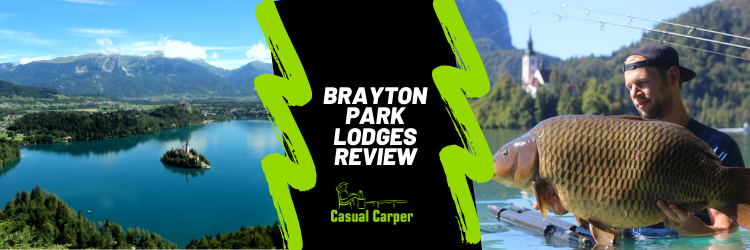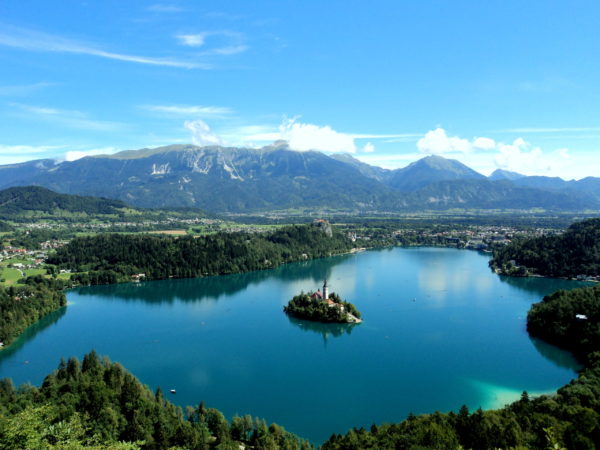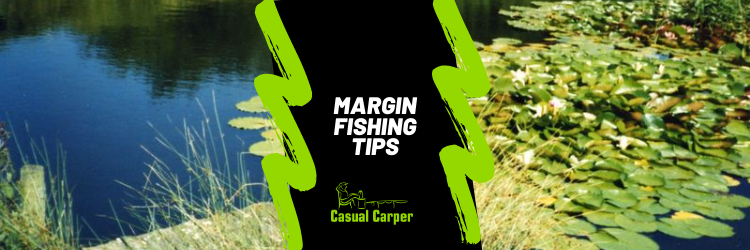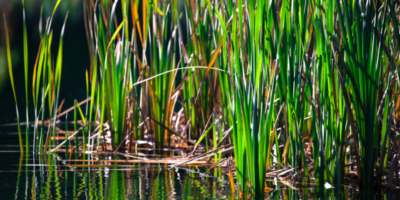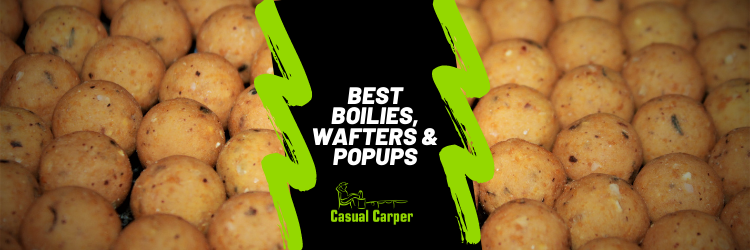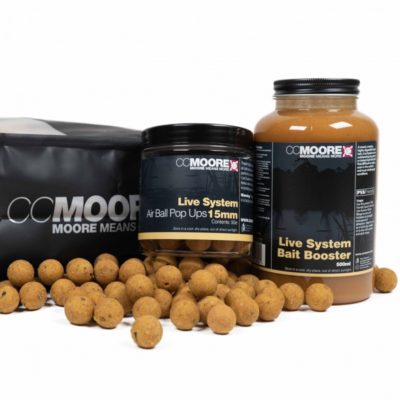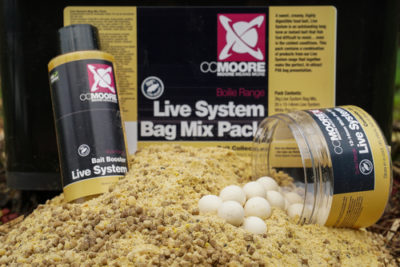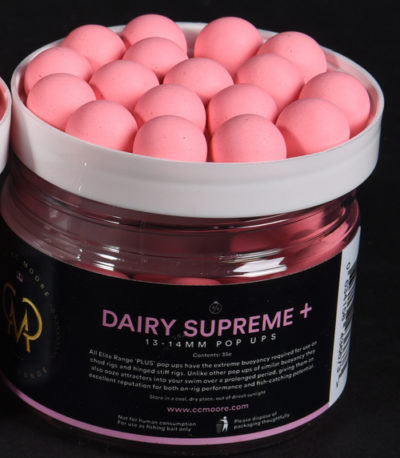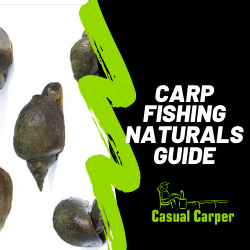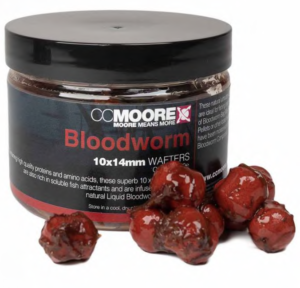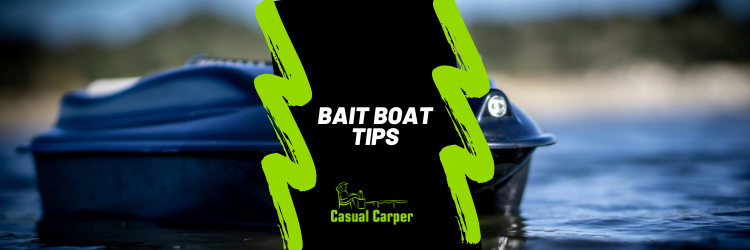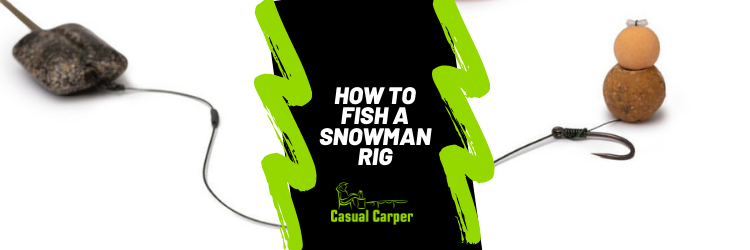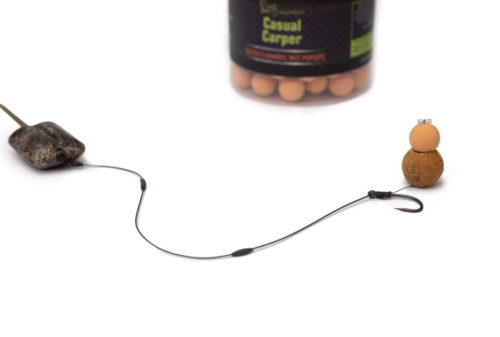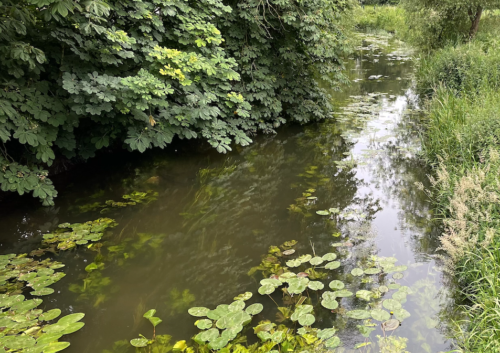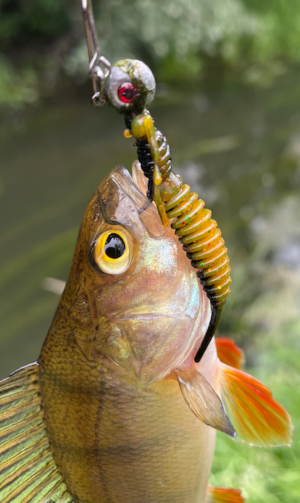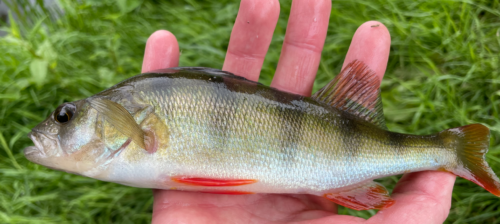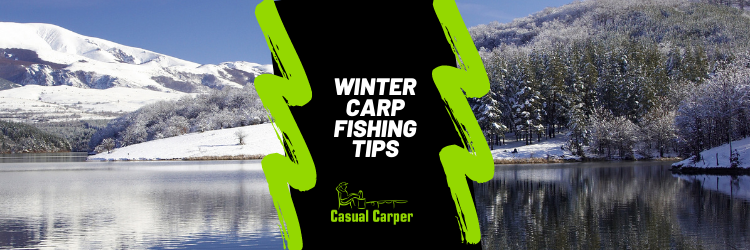
It’s cold, it may be snowing, but does that stop us catching carp? NO!
Here are my top winter carp tips and tactics to get more fish on the bank this year. Read on to find out how to catch carp in winter.
On this guide, you will find
-
Winter carp – Top 7 tips!
1 – Use smaller baits
As a general rule size down on the tackle and baits – especially the free offerings. There’s no need in winter to spod out a load of bait, try smaller baits – boilies of 10mm and 12mm work well even for the bigger carp. In winter I like a small strongly scented hook bait like these – Yellow caramel nut wafters. These are airball wafter and drop nicely through the water on the cast. The light pink colour works well for me at this time of year along with white baits. - These work well fished with just a couple of matching freebies and some boilie crumb in a PVA bag – I’d add a matching glug to improve the attraction. You can read my guide to the best small boilies here.
2 – Find the rubbing spots!
Every lake will have spots that the carp like to rub themselves against. These can be very hard to find – have a look at my Youtube video below where I show you a spot I’ve found underwater that has all the trademarks of a rubbing spot! Here you can see the type of spot I’m talking about on from my YouTube channel3 – Glug, Glug and more Glug
I’ve mentioned this a couple of times already but a top tip is to make sure you keep glugging your baits on every cast and mix the flavours up. In winter you can’t just nail a load of spod mix in to attract the fish so adding extra attractants like boilie glug to your baits is essential. This is essential to getting the maximum attraction into the water. You need to avoid oils at this time of year too as they do not absorb into the water as well. Getting more scent into the water can help produce extra fish in your sessions. You can read my guide on boilie glug here.4 – Watch the water
It’s tempting to download the latest game of thrones and just watch that on your tablet while fishing but watching the water can have good long term results. As soon as you see any sign of a carp then get some bait over in that direction. A tough winter session can be very quickly changed by spotting a showing fish and either casting a hook bait to it or moving to that area of the lake. From the video above they may even show you where their rubbing spot is from this.5 – Start late
On the colder days, the carp are more active in the later parts of the afternoon until a couple of hours after dark. It’s best not to rush off out to catch them at 7 am as you’ll be hitting the wrong time and freezing by the peak time. Again this goes back to planning your sessions to get more carp.6 – Keep going
This is one of the best winter carp tips I can give. Keep the rods going in and out of the water to try and find the fish. They don’t move as much in the winter so take a view of your swim and keep moving your hook bait around to find some fish. You may even find a few holed up together and after a fish, it’s worth probing the same spot again. I’d say cast in every 30-45 minutes moving slowly around the swim looking for bites. A zig rig can work well in winter too, I personally only use these as a back up on really tough days but they can entice the odd fish out.7 – Zig it up!
Some people seem obsessed with the idea that in the winter carp just sit on the bottom in the same place, but I don’t find that to be the care. Ignoring the zig rig is a big mistake in winter carp fishing in my opinion. It’s not the first method I’d try on arrival at a lake but is one I’ll use throughout the day. Get a glugged popup on and try and different levels in the water and see if it gets any bits.8 – Be prepared
As the boy scouts motto goes you need to get yourself prepared for winter fishing. Whether it’s nice commercial water you are going to or a lake in the middle of nowhere make sure you get ready before you go. In the summer I’m all for chucking it all in the back of the car and sorting it when I get there, but not the winter. Preparation is the key to success and not freezing your you know what’s off! Make sure you have plenty of warm clothing, hot drinks and if you’re going for a winter night session a decent warm sleeping bag! That’s the end of my 7 best winter carp tips. Good luck if you’re our fishing and send me a tweet of what you catch to @casual_carper or find me on Instagram “@CasualCarper“.Winter carp bait tactics
As well as my top 5 tips I’m sharing my favourites tactics for winter carp too. These are ways that I’ve caught in difficult sessions. I do find winter fishing tough and I’ve had a few blanks over the years but it’s best to persevere and not get downhearted by the odd blank!Tactic 1 – Salted Caramel and Nut Boilies, PVA string, matching glug
As mentioned above this is all about keeping it small scale and these 15mm boilies on a PVA string do the trick perfectly. I’ll only string 2-3 extra boilies and then give them a good glug of flavouring. This really helps to enhance the bait and get those all-important bites. Here’s what you need – High-quality boilies – My range here Korda total dissolve – PVA string here Matching Glug, or alternative glugTactic 2 – Dead maggots
A massively overlooked tactic in winter in my opinion. Depending on the range I’ll either fish a clump of these on a size 12 hook or use a maggot ring. Pour boiling water over the maggots or freeze them overnight to kill them. If you’ve never fished this way to get ready for a smell sensation! (not in a good way!)Tactic 3 – Popup over PVA bag
I’d again go for a popup of 12mm or 10mm in this and often use a white or light pink popup which is great visual bait. These are fished with a really small PVA bag of low oil pellets along with some glug again. If the bites are quiet this is the method I’ll turn to try and get some bites. You can mix this up and use a stick mix or some crumbed matching boilies in the bag along with some glug. All I’m looking for in the winter is a mouthful of bait for the carp, just enough to tempt them to take it. New for this season – I’ve been enjoying using bait sprays to give my hook baits an extra edge. It’s one that helps make the hook bait stand out more and can get you quicker bites in the summer. I’ll be testing it our more over the winter and will update you on how it goes. It is PVA friendly so you can spray your free offerings and bags in it.Tactic 4 – Small boilies, spod mix and maggots
This is one that I’ve seen some good catches on Instagram (like my page – @CasualCarper) and is a good one for the winter – obviously, your bait could get obliterated in the summer on these tactics. You scale down the bait to a 12mm boilie fished over a very small amount of bait including (or a mix of) spod mix, corn, pellets and maggots. You can then fish the small boilie on the hook with a corn stopper – or with a fake corn popup for a critical balance. Tips – A good tip for catching carp on this method I’d to use a popup over the bed of bait. Then add a small amount of tungsten putty and just let it popup about 1-2 inches rather than a full hook length worth.Tactic 5 – Ground bait
In winter getting the smell of attractants into the water can be tricky, as you don’t want to pile in masses of bait. A good trick is to use a bread crumb ground bait mixed purely with liquid additives and not many if any, free offerings. The smell will do the job of attracting the carp to and an area where they find your hook bait. As its winter the smaller fish won’t pick off the ground bait like they would in the summer.Best winter rigs
In winter everyone knows to scale down as mentioned above, smaller baits and smaller hooks work but being flexible with your rigs will really help you catch more carp too.Rig 1 – Micro chod mk2
This one comes from renowned angler Adam Penning and was featured in Carpology recently. This is a rig I’m a big fan of in winter. The hinging of the hair keeps the bait presented nicely away from the lead core and works well with small popups and wafters. Here’s how the rig looks – You can read how to tie this rig here. This is one well worth checking out and playing around with to see how to get it set up to suit your fishing. I like to mix it up with a slightly longer hook link to sit it more prominently in the water depending on where I’m fishing and what the bottom is like.
You can read how to tie this rig here. This is one well worth checking out and playing around with to see how to get it set up to suit your fishing. I like to mix it up with a slightly longer hook link to sit it more prominently in the water depending on where I’m fishing and what the bottom is like.
Rig 2 – Single maggot on the hook
Whilst this isn’t specifically a different rig it just gives you another option. Take a hook link without a hair and a hook size or 10 or 12 and feed the maggot into the straight of the hook. Fish with a PVA bag of dead maggots on a standard ledger rig for great effect. In winter you won’t have the problem of smaller silverfish and perch taking the maggot-like you would in spring/ summer if you do try a maggot clip to use a bunch of maggots on a hair rig instead.
Other Carp Fishing Tip

